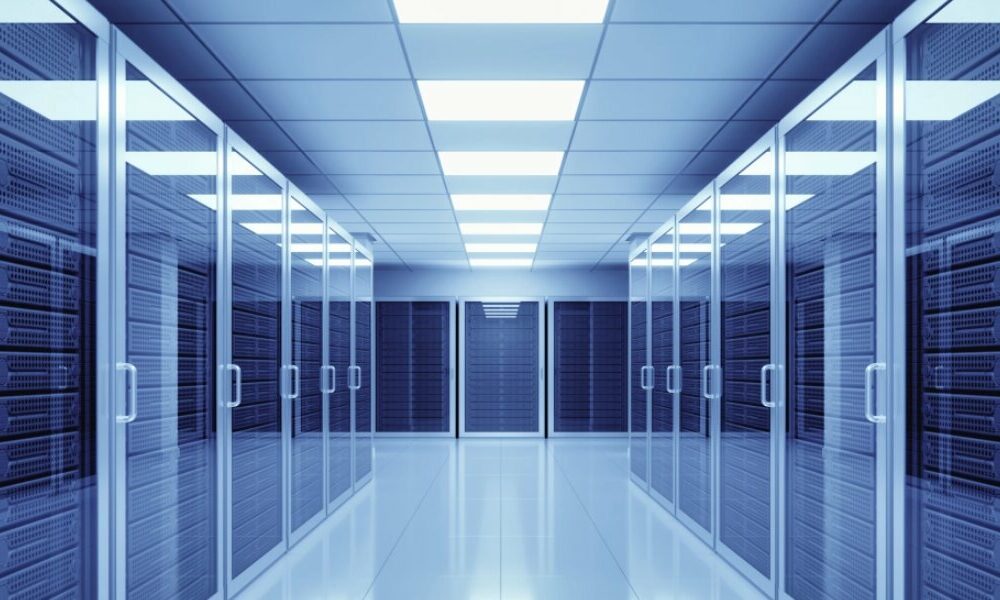AI continues to change the landscape of the data center industry, and this reality is reflected in the 2025 trends identified by Vertiv. Company experts predict an increase in innovation and integration in the sector with the goal of supporting high-density computing. In addition, they believe that there will be greater regulatory scrutiny around AI and more weight will be given to sustainability and cybersecurity. Besides…
Power and cooling infrastructure will innovate to keep pace with computing densification
In 2025, the impact of large computing workloads will intensify and the industry will look to manage this sudden change in a variety of ways. Advanced computing will continue its transition from CPUs to GPUs to take advantage of the parallel computing power of the latter as well as the higher thermal design point of modern microchips. This will continue to put pressure on existing power and cooling systems, forcing data center operators to adopt cold plate and immersion cooling solutions that remove heat at the rack level. Corporate data centers will be impacted by this trend, as the use of AI expands beyond cloud and colocation service providers.
- AI racks will require uninterruptible power supplies (UPS), batteries, electrical panels and distribution equipment with higher power densities to handle AI workloads that can fluctuate, in an instant, from 10% – in sleep mode – up to 150% overloads.
- Hybrid cooling systems, with liquid-to-liquid, liquid-to-air, and liquid-to-refrigerant configurations, will evolve into rack models, edge systems, and row systems for deployments in existing applications or new construction.
- Increasingly, liquid cooling systems will be combined with their own dedicated, high-density UPS systems to ensure continuous operation.
- The servers will be progressively integrated with the infrastructure necessary for their operation, including factory-integrated liquid cooling. Ultimately, this will make manufacturing and assembly more efficient, deployment faster, equipment volume lower, and system energy efficiency higher.
Data centers will prioritize energy availability challenges
The overextension of electrical grids and the sharp increase in energy demand are changing the way data centers consume electricity. Globally, data centers use an average of 1-2% of the world’s electricity, but AI is driving this consumption up and the figure is likely to rise to 3-4% by 2030. The expected increases will create new demands. on the network that many providers will not be able to manage, attracting regulatory attention from governments around the world, including possible restrictions on data center construction and energy use, as well as increases in costs and carbon emissions that organizations of the sector They are trying hard to control. These pressures are forcing companies to prioritize energy efficiency and sustainability even more than before.
In 2024, we predicted a trend towards energy alternatives and microgrid deployments and in 2025 we are seeing an acceleration of this trend, with real movement towards the search and prioritization of efficient solutions and energy alternatives that are new in this segment. There is increasing availability of fuel cells and alternative battery technologies as microgrid power options. Longer term, multiple companies are developing small modular reactors for data centers and other large electricity consumers. These solutions are expected to be available towards the end of the decade. Progress in this field during 2025 is worth paying attention to.
Industry members will collaborate to drive development of AI factories
Average rack densities have increased steadily over the past few years, but for an industry that managed an average density of 8.2 kW in 2020, predictions for AI factory racks are in doubt. around 500 to 1000 kW, or even more in a short time, which represents an unprecedented disruption. As a result of these rapid changes, microchip developers, customers, power and cooling infrastructure manufacturers, energy companies and others in the industry will increase their collaboration to develop and support transparent roadmaps to facilitate the adoption of AI. This collaboration will extend to AI-powered development tools to accelerate engineering and production of standardized and tailored designs. In this coming year, microchip producers, infrastructure designers and customers will increase collaboration toward manufacturing alliances that enable true integration of infrastructure and computing.
AI will make cybersecurity more complex – and easier too
The increase in frequency and severity of attacks of ransomware has led to new and expanded studies of cybersecurity processes, as well as the role the data center community plays in preventing such attacks. Last year, a third of all attacks involved some form of ransomware or blackmail, and criminals are taking advantage of AI tools to increase their operations, extend their reach and employ more sophisticated approaches. Attacks often begin with AI-assisted hacking of control systems, embedded devices or connected hardware, and infrastructure systems that have not always been designed to meet the same security requirements as other network components. Without proper diligence, even the most sophisticated data centers can become unusable.
As cybercriminals continue to leverage AI to increase the frequency of their attacks, cybersecurity experts, network administrators, and data center operators will need to keep pace by developing their own sophisticated AI technologies for security. While the fundamental principles and best practices of comprehensive protection and extreme diligence remain the same, the changing nature, source and frequency of attacks adds new nuances to today’s cybersecurity effort.
Industry regulators and governments will address AI applications and energy consumption:
Although our predictions for 2023 focused on government regulation of energy consumption, in 2025 we anticipate the possibility of regulations that increasingly address the use of this technology. Governments and regulatory bodies around the world are racing to assess the implications of this technology and develop guidelines for its use. The trend towards sovereign AI, that is, national control or influence over the development, deployment and regulation of AI and regulatory frameworks aimed at governing it, are the key points of the European Union Artificial Intelligence Law and the Cybersecurity Law (CSL) and the China AI Safe Governance Framework. Denmark has recently launched a sovereign AI supercomputer and many other countries have undertaken their own sovereign AI projects and legislative processes to expand regulatory frameworks, providing a clear indication of the trajectory of this trend. The evolution of some form of regulation is inevitable and restrictions are very possible, if not probable.
Initial steps will focus on applications of the technology, but as the focus on energy and water consumption, as well as greenhouse gas emissions, intensifies, regulation could extend to the types of AI applications and data center resource consumption. In 2025, governance will continue to be local or regional, rather than global, in scope, and the consistency and stringency of its application will vary considerably.










